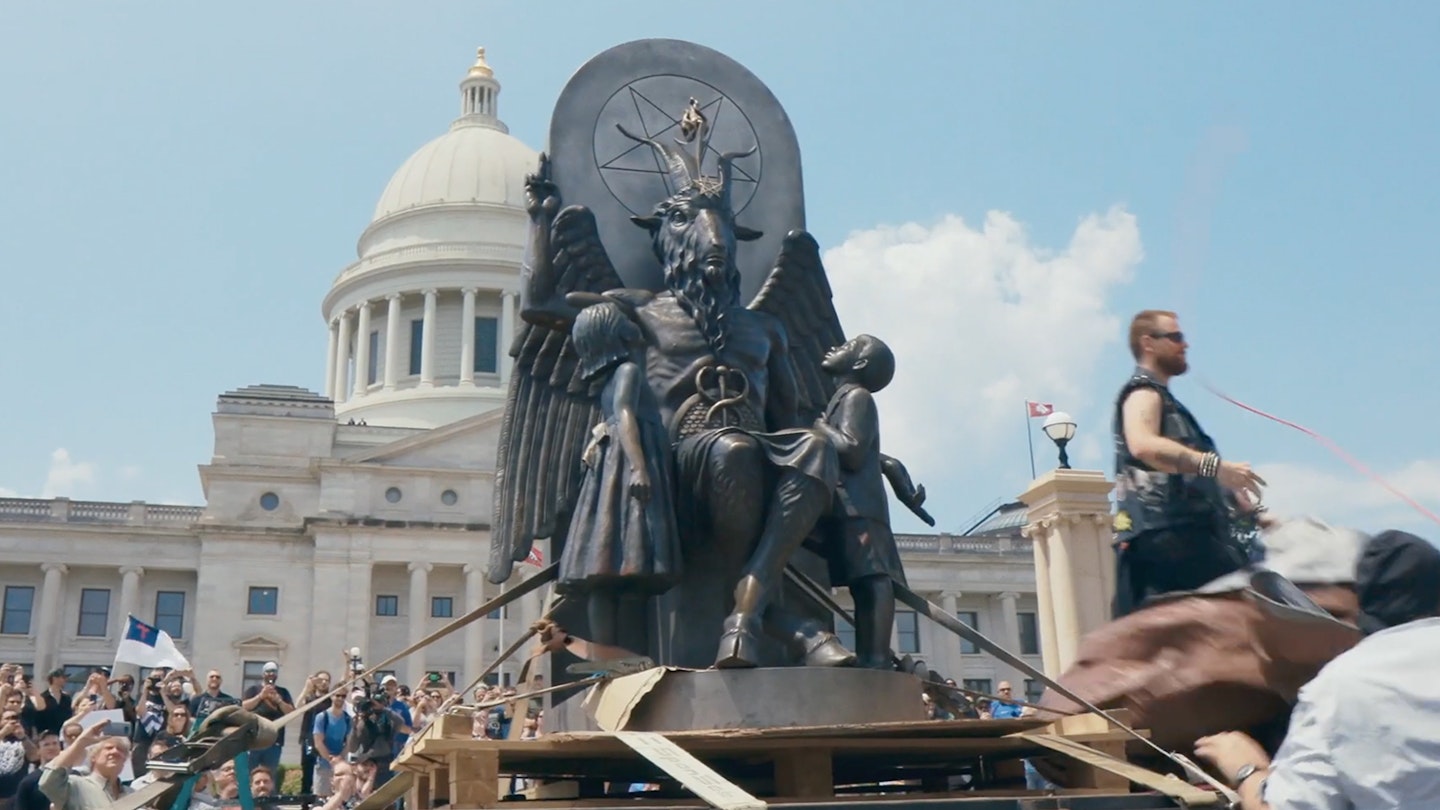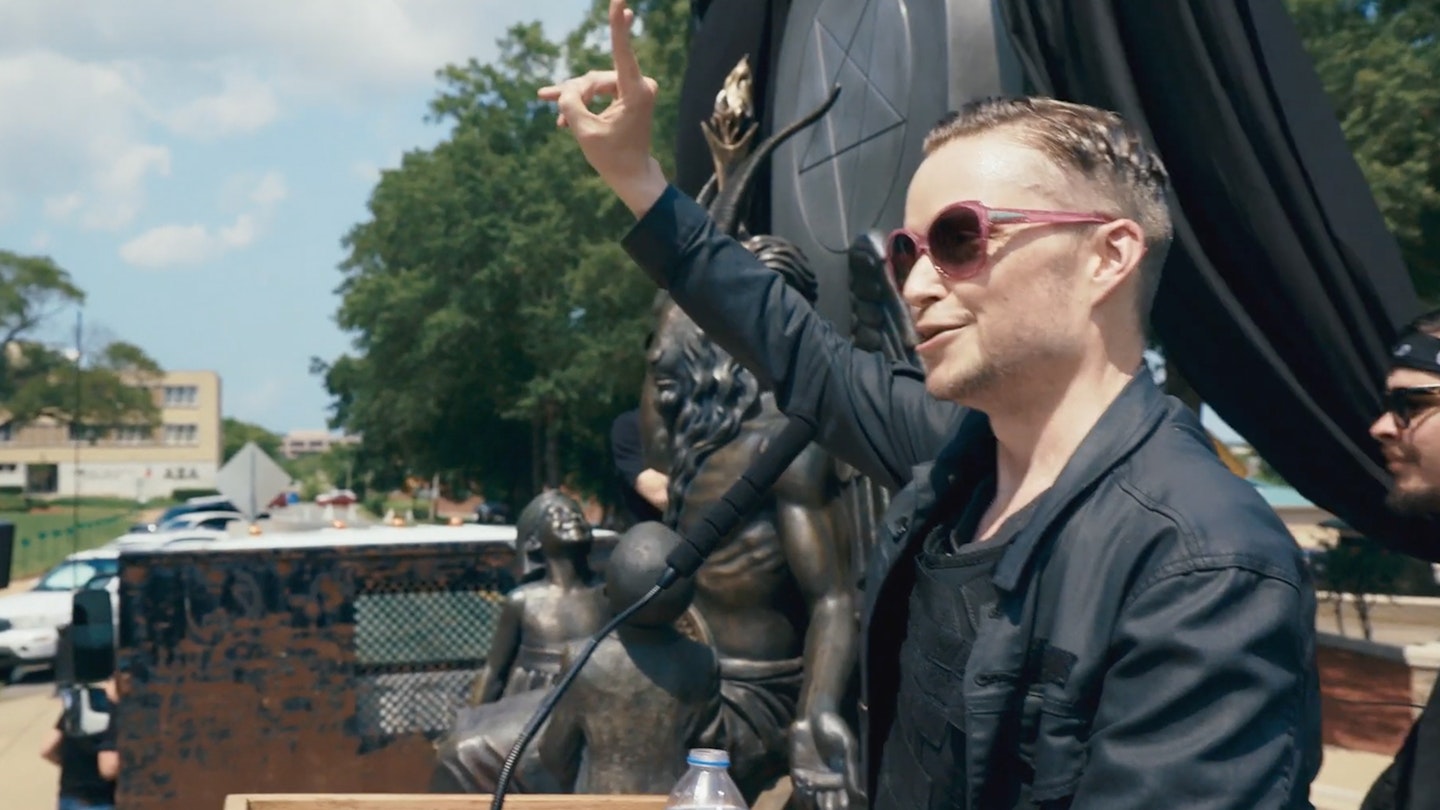In traditional Christian mythology, Satan is the original ultimate villain — the fallen angel, the anti-God, the corrupter of Adam and Eve. As for Satanists, horror movies and tabloid scares have taught us that they’re pentagram-clad cultists, primed to ritually sacrifice virgins and unsuspecting babysitters in deference to their Dark Lord.
Or not. Meet The Satanic Temple — an American religious organisation founded in 2013 by the self-anointed Lucien Greaves, which has emerged to “spread a message of goodwill and benevolence and open-mindedness and free expression”, subverting and reappropriating the notion of Devil worship into something altogether more progressive. This lot give dry socks to the homeless, embark on litter-picking drives, are firmly pro-LGBTQIA+, and protest against anti-abortionists and the Westboro Baptist Church.

Documentarian Penny Lane presents a hilarious, timely and thought-provoking look at an underground, self-constructed religion that aims to stir controversy while offering sanctity to those who fall outside the worldview of typical all-American Christian values. Satan, the Temple argues, has always been portrayed as ‘evil’ by those who believe that the God of institutional Christianity is inherently good. But if the Devil is merely a dissenting voice against authority who feels that humanity deserves to have freewill, is he really that bad?
There’s a sense of Taika Waititi vampire mockumentary What We Do In The Shadows about it that’s hard to shake.
Lane’s film spends much of its time exploring the ideas, practices and members of The Satanic Temple (‘TST’ for short) and unpack what it really stands for. Is it a political protest winkingly tied to the image of the Devil? Is it a sincere expression of freedom of belief, taking the form of an alternative religion? Or is it mere trolling, an attempt to get a rise out of middle America? The answer, it seems, is a bit of all three.
Their political function is clear — to uphold the separation of church and state, and ensure no one religion takes prevalence. Lane’s documentary draws intriguing lines between the Satanic Panic hysteria of the ’80s and ’90s and the true scandal of child abuse within the Catholic church, while much time is devoted to Greaves’ attempt to stop a statue of the Ten Commandments being built at the Arkansas State Capitol by proposing that a statue of Baphomet — the horned goat demon — also be constructed.
The message might be serious, though the delivery is anything but. Lane’s lens delights in images that combine the shock value of Satanism with everyday mundanity — whether it’s the TST spearing litter with tiny pitchforks, a Black Mass meeting at Harvard being forced to relocate to a Chinese restaurant, or the Temple modelling its Baphomet statue on the torso of Iggy Pop. There’s a sense of Taika Waititi vampire mockumentary What We Do In The Shadows about it that’s hard to shake — and which makes Hail Satan? as amusing as it is oddly inspiring.
